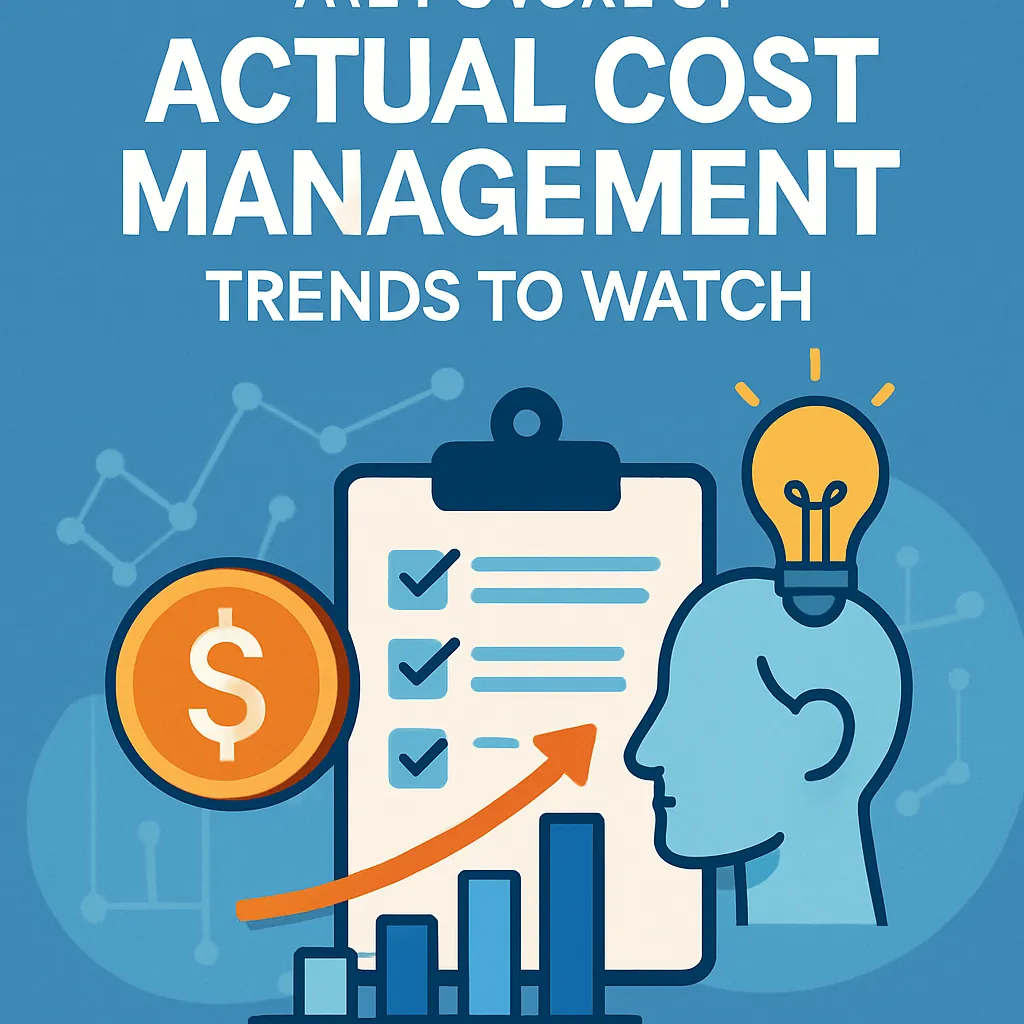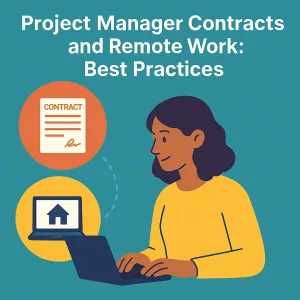Introduction
The concept of actual cost (AC) plays a pivotal role in ensuring that projects are completed within budget and meet their intended objectives. Actual cost refers to the total expenses incurred for project activities during a specific time frame, encompassing all costs associated with resources, labor, and materials used in the project [1]. This metric is essential for project managers as it provides a clear picture of financial performance, allowing for informed decision-making and timely corrective actions.
Traditionally, cost management practices have revolved around estimating costs, setting budgets, and monitoring expenditures against these projections. This approach often relied on historical data and fixed formulas to predict future costs, which could lead to discrepancies between estimated and actual expenses [4]. However, as project environments become increasingly complex and dynamic, the limitations of these traditional methods are becoming more apparent.
Understanding actual cost is crucial for project success for several reasons:
- Performance Tracking: Actual cost data serves as a key performance indicator, enabling project managers to assess how well the project is adhering to its budget and timeline [4]. By comparing actual costs to planned costs, managers can identify variances and take corrective actions as needed.
- Resource Allocation: A clear understanding of actual costs allows for better resource management. Project managers can adjust strategies and allocate resources more effectively, ensuring that project needs are met without overspending [2].
- Enhanced Decision-Making: Real-time tracking of actual costs fosters a more agile project management approach. By maintaining open communication among teams and regularly updating cost data, managers can make informed decisions that enhance project efficiency and effectiveness [2][3].
Current State of Actual Cost Management
Actual cost management is a critical component that ensures projects are completed within budget while maximizing resource efficiency. As organizations increasingly adopt advanced methodologies and tools, the landscape of actual cost management is evolving. Here’s an analysis of the current practices, challenges, and successful case studies in the industry.
Overview of Existing Methodologies and Tools for Tracking Actual Costs
Project managers today utilize a variety of methodologies and tools to track actual costs effectively. Some of the most prevalent include:
- Earned Value Management (EVM): This technique integrates project scope, schedule, and cost to assess project performance and progress. It allows project managers to compare the planned progress with the actual progress, providing insights into cost variances and performance metrics [12].
- Cloud-Based Solutions: These platforms offer flexibility and real-time collaboration, enabling project teams to monitor costs from anywhere. They facilitate the integration of environmental and social costs into project management practices, reflecting a growing emphasis on sustainability [10].
- Automated Cost Management Tools: The rise of AI-driven software has transformed cost management by automating tasks that were once manual, such as budget tracking and cost forecasting. This automation enhances efficiency and accuracy, allowing project managers to focus on strategic decision-making rather than administrative tasks [6][8].
Discussion of Common Challenges Faced by Project Managers
Despite the advancements in tools and methodologies, project managers still encounter several challenges in actual cost management:
- Data Accuracy: Ensuring the accuracy of cost data is a persistent issue. Inaccurate data can lead to misguided decisions and project overruns. Project managers must implement rigorous data validation processes to mitigate this risk [11].
- Budget Overruns: Many projects face the challenge of budget overruns due to unforeseen circumstances or poor initial estimates. This highlights the importance of developing a detailed cost management plan that outlines how costs will be controlled and monitored throughout the project lifecycle [7].
- Stakeholder Communication: Regularly updating stakeholders on the financial status of a project is crucial. However, many project managers struggle with effectively communicating cost-related information, which can lead to misunderstandings and a lack of transparency [11].
Case Studies Highlighting Successful Actual Cost Management
Several organizations have successfully navigated the complexities of actual cost management, serving as benchmarks for best practices:
- Construction Industry Example: A major construction firm implemented an AI-driven cost management tool that allowed them to predict costs with remarkable precision. By automating budget tracking and utilizing real-time data analytics, they reduced their budget overruns by 30% over a two-year period, demonstrating the effectiveness of technology in managing actual costs [4].
- IT Project Management: An IT company adopted EVM to track project performance. By integrating this methodology with their existing project management software, they were able to identify cost variances early and adjust their strategies accordingly. This proactive approach led to a 25% increase in project delivery within budget [12].
Emerging Trends in Actual Cost Management
The landscape of actual cost management is being reshaped by several key trends. These trends not only enhance the accuracy of cost tracking but also improve decision-making processes for project managers. Here are the emerging trends that are set to define the future of actual cost management:
- Integration of AI and Machine Learning for Predictive Cost Analysis: The incorporation of artificial intelligence (AI) and machine learning into cost management practices is revolutionizing how project managers forecast expenses. These technologies enable the analysis of historical data to predict future costs with greater accuracy, allowing for more informed budgeting and resource allocation. By leveraging AI, project managers can identify potential cost overruns early in the project lifecycle, facilitating proactive management strategies [11][15].
- Rise of Real-Time Data Analytics and Its Impact on Decision-Making: The shift towards real-time data analytics is transforming the way project managers approach cost management. With access to up-to-the-minute financial data, project managers can make timely decisions that reflect the current state of the project. This immediacy not only enhances transparency but also allows for agile responses to unforeseen challenges, ultimately leading to better financial outcomes [10][12].
- Adoption of Agile Methodologies and Their Implications for Cost Tracking: The growing popularity of Agile methodologies is influencing cost management practices significantly. Agile frameworks promote iterative progress and flexibility, which can complicate traditional cost tracking methods. However, they also encourage continuous reassessment of project costs, enabling teams to adapt their financial strategies in response to changing project dynamics. This adaptability is crucial for maintaining budgetary control in fast-paced project environments [11][14].
- Increased Focus on Sustainability and Its Effect on Cost Management: As businesses become more environmentally conscious, sustainability is emerging as a critical factor in cost management. Project managers are increasingly tasked with integrating sustainable practices into their projects, which can affect overall costs. While sustainable initiatives may require upfront investments, they often lead to long-term savings and improved project viability. This trend emphasizes the importance of considering environmental impacts alongside financial metrics in cost management strategies [12][14].
Implications of Emerging Trends
The integration of advanced technologies and methodologies is reshaping how actual costs are managed. Here are some key implications of emerging trends in actual cost management that forward-thinking project managers and industry analysts should consider:
- Enhanced Accuracy in Forecasting Actual Costs: The incorporation of artificial intelligence (AI) and advanced analytics is revolutionizing the accuracy of cost forecasting. By leveraging machine learning algorithms, project managers can analyze historical data and identify patterns that inform more precise cost predictions. This shift not only minimizes the risk of budget overruns but also enables proactive decision-making, allowing teams to adjust strategies in real-time based on predictive insights [4][6].
- Impact on Resource Allocation and Budgeting Processes: The integration of AI and analytics into cost management processes is transforming resource allocation and budgeting. With improved forecasting capabilities, project managers can allocate resources more effectively, ensuring that funds are directed toward high-priority areas. This strategic approach enhances overall project efficiency and can lead to significant cost savings, as resources are utilized more judiciously [3][4].
- Role of Data Transparency in Fostering Trust Among Stakeholders: As organizations adopt more sophisticated cost management tools, data transparency becomes crucial. Clear visibility into actual costs and budget allocations fosters trust among stakeholders, including clients, team members, and upper management. When stakeholders can access real-time data and understand the financial implications of project decisions, it enhances collaboration and accountability, ultimately leading to more successful project outcomes [8][9].
- Potential Challenges and Risks Associated with New Technologies: While the adoption of AI and analytics presents numerous benefits, it also introduces challenges and risks. Project managers must navigate issues such as data security, the potential for over-reliance on technology, and the need for continuous training to keep teams updated on new tools. Additionally, the transition to these advanced systems may require significant investment and a cultural shift within organizations, which can be met with resistance [6][9].
Preparing for the Future of Actual Cost Management
Understanding and adapting to emerging trends in actual cost management is crucial for project managers aiming to maintain competitiveness and efficiency. Here are some actionable strategies that can help project managers prepare for the future:
- Investing in Training and Development for New Tools and Techniques: With the rise of advanced technologies such as artificial intelligence (AI) and automation, project managers must prioritize training their teams on these new tools. This investment not only enhances the skill set of the workforce but also ensures that the team is equipped to leverage these technologies for more accurate cost estimation and tracking. By embracing these innovations, organizations can reduce inefficiencies and improve overall project performance [5][6].
- Encouraging a Culture of Continuous Improvement and Innovation: Fostering an environment that values continuous improvement is essential. Project managers should encourage team members to share insights and propose innovative solutions for cost management challenges. This culture can lead to the identification of new strategies that enhance cost efficiency and project outcomes. By regularly reviewing processes and outcomes, teams can adapt and refine their approaches to actual cost management [4][6].
- Developing a Strategic Roadmap for Technology Integration: As the landscape of cost management evolves, it is vital for project managers to create a strategic roadmap that outlines how new technologies will be integrated into existing processes. This roadmap should include timelines, resource allocation, and specific goals for technology adoption. By having a clear plan, organizations can ensure a smooth transition to new systems and practices, minimizing disruptions and maximizing benefits [4][5].
- Collaborating with Stakeholders to Ensure Alignment on Cost Management Goals: Effective cost management requires collaboration across various stakeholders, including finance teams, project sponsors, and operational staff. Project managers should facilitate regular discussions to align on cost management objectives and ensure that all parties are informed about budgetary constraints and expectations. This collaboration not only enhances transparency but also fosters a shared commitment to achieving project goals within budget [2][9].
By implementing these strategies, project managers can position themselves and their organizations to effectively navigate the future of actual cost management, ensuring that they remain agile and responsive to the changing demands of the industry.
Conclusion
The significance of actual cost management cannot be overstated. It serves as a critical metric that enables project managers to track performance, optimize spending, and ensure that projects remain within budget. By understanding and analyzing actual costs, project managers can make informed decisions that directly impact the success of their projects. This understanding is essential not only for current project execution but also for refining future cost estimates and strategies, thereby enhancing overall project efficiency and effectiveness [1][10].
As we look to the future, it is imperative for project managers to stay ahead of the curve in cost management practices. Emerging trends such as advanced data analytics, integration of artificial intelligence, and real-time cost tracking are reshaping how actual costs are monitored and managed. These innovations promise to provide deeper insights into cost patterns and trends, allowing for more accurate forecasting and proactive decision-making [4][14].
To thrive in this dynamic environment, project managers must embrace these emerging trends and adapt their practices accordingly. This proactive approach will not only enhance their ability to manage costs effectively but also position them as leaders in the field of project management. By staying informed and agile, project managers can ensure that they are not just reacting to changes but are actively shaping the future of actual cost management [2][3].
Find out more about Shaun Stoltz https://www.shaunstoltz.com/about/.
This post was written by an AI and reviewed/edited by a human.



